Real World Nutrition News You Can Use
There is a lot of misinformation about nutrition. And nothing in this field is black-or-white, yes-or-no, but many shades of gray and a lot of “it depends.” So, my goal is to help clear up some of that misinformation with some snark, entertainment, and facts (with some opinion thrown in).
Many of these topics come from interactions with the public, friends, clients, and students. I see sheer misinformation about the science of nutrition, and I do my best to clear things up one blog post at a time.
If you have a topic you are wondering about, let me know.
Looking for a specific topic? Search to see if it is already here.
Diet, Weight Loss, and the Dietitian
As a dietitian, I talk to people all the time about their diet. But in my experience, the word “diet” is sometimes viewed as offensive, occasionally polarizing, and often misunderstood.
It is a four-letter word that starts with DIE. Yikes. But we can manipulate all kinds of words to have a particular meaning, right? I mean, the word LIVE is EVIL spelled backward, which means what? Nothing.
Counting Macros? What are they anyway?
In the science of human nutrition, calories are the measure or units of energy that we need, and they come from food (and beverages). There are four sources of calories in human nutrition. Three are nutrients, and the fourth is not.
We call these three nutrients that provide calories “macronutrients” because they are necessary or essential nutrients in large quantities relative to the “micronutrients,” which are vitamins and minerals.
How Is Your Sleep? Tired? Embrace Better Sleep Habits
With technology today, it is so easy to stay connected – 24 hours a day. And this can affect our sleep hygiene.
There is often a debate on how much sleep is optimal; like many things in life, this is individual. But the average optimal sleep time is 7-9 hours sleep for adults (research says it varies by individual and age).
Spring Fever: Should You Still Workout?
With spring here and a new season of allergies having arrived, and many people are sneezing and sniffling right now. While it could be difficult to run or bike when you are sneezing, is it still okay to exercise if you are sick?
Is “Fresh” the “Best”?
Sometimes you will hear that “fresh is best,” referring to fruits and vegetables. When I tell people to eat more fruits and vegetables, I say that I encourage various colors regardless of fresh, frozen, or canned.
Dimensions of Wellness: Environmental Wellness
Remembering that the phrase “reduce, reuse, recycle” was designed as a hierarchy. So, we should first focus on reducing the use of resources and energy use and packaging. Many people believe that recycling is enough, but this was meant as what to do AFTER reducing and reusing.
What’s wrong with juice?
There are more benefits than pitfalls, but juice’s high-calorie content can trump it all if you consume too much. Even with all of the nutrients in the juice, the calories can be just too much. Even if you are making it yourself, the calories are still higher in the juice than its whole fruit or vegetable counterpart.
Grocery Store Rule: Shop the Perimeter?
Sometimes you will hear dietitians and other health professionals tell people to “shop the perimeter” as a smart shopping strategy. This recommendation is from a classic grocery store set up of the fresh, whole foods being the perimeter of most stores, like produce, fresh meat, dried beans and nuts, and dairy products. Granted, stores vary in their setup, and there are exceptions to this sometimes.
Dimensions of Wellness: Physical Wellness
Physical wellness has several sub-components, but it is all has to do with the physical body and taking care of it now and in anticipation of the future.
Of course, this component includes engaging in regular exercise and eating well, but it also includes getting preventive checkups and screenings, having healthy habits and behaviors, and protecting yourself from potential harm.
Wanting to Lose Weight For Good? Five Myths Busted
With warmer weather coming and lifting many restrictions from the past year, some people may realize that they may want to drop some weight before venturing outside and socializing again.
But before embarking on this, consider that many of the drastic measures to lose weight or quick fixes are temporary and often result in weight regain when old habits return. What can help with weight loss? Here are the top five myths regarding weight loss.
Four Foods to Add to Your Diet
Have you set a goal to “eat healthier” and thinking about what foods to stop eating? Shift that mindset and focus on what to add to your diet. Research suggests that depriving yourself of foods, or anything, you want can increase your desire for it. In my more than 20-years’ experience working with clients, I encourage ADDING foods rather than taking them away.
Dimensions of Wellness: Occupational Wellness
Occupational wellness is having satisfaction with your career or job. It also includes finding balance in both work and non-work activities and commitments, including knowing when to say “no” to maintain that balance.
Even if you are retired, this is still an area of wellness to consider.
Technically there is a difference between a career and a job, but that is mostly is based on attitude for our purposes here.
Food Groups vs Nutrients
One of the on-going things I see and hear is people using food groups and nutrients as interchangeable. They aren’t really.
Like the time my friend said she wasn’t going to have any carbs for lunch – then had a salad and a glass of wine. Really. That was a HIGH carb lunch. I would estimate that 80% of the meal was carbohydrates. It could be more. Look it up.
Powerful Potassium
We hear a lot about sodium. We get too much, and we need to cut back; processed foods and restaurant foods are high in sodium. The Dietary Guidelines for Americans 2020-2025 recommend that we limit “Sodium—Less than 2,300 milligrams per day—and even less for children younger than age 14.”
Dimensions of Wellness: Intellectual Wellness
Are you a life-long learner? You should be. And this doesn’t mean you need to go to school forever and ever. That’s the stuff of nightmares for some people.
Intellectual wellness is the aspect of wellness in which you continue to expand your mind by increasing your knowledge, skills, and even your creative abilities throughout life.
How Does Your Belly Measure Up?
Excess abdominal/belly fat increases the risk of high blood pressure, type 2 diabetes, high cholesterol and triglycerides, and heart disease – all preventable diseases. When considering a BMI between 25 and 35, waist circumference can help find the risk for these diseases.
Eat for Your Immunity
Does how you eat affect your immune system? Absolutely. Eating healthy can reduce your chances of getting sick this winter just as much as poor eating can increase the risk of getting sick. Your diet has a significant role in helping you defend against viruses and other germs that can get you sick.
Dimensions of Wellness: Emotional Wellness
Emotional Wellness is the component of wellness related to our ability to develop inner strength and learn and grow from experiences.
Let’s face it, 2020 was a year that tested our emotions. There were things we experienced that we could never have imagined. It was probably one of the more stressful times of our lives.
More Than a Number on the Scale: Measuring Healthy Weight
People often use the number on the scale to assess their weight and have a number in mind for their healthy weight. But there is more than just weight that helps evaluate and figure a healthy weight.
Do You Hear What You Want to Hear?
Are you honest with your health care provider? Are they being clear with you?
Both sides need to get better at communicating, getting clearer with what they mean, and being more honest with themselves and their healthcare providers.




















